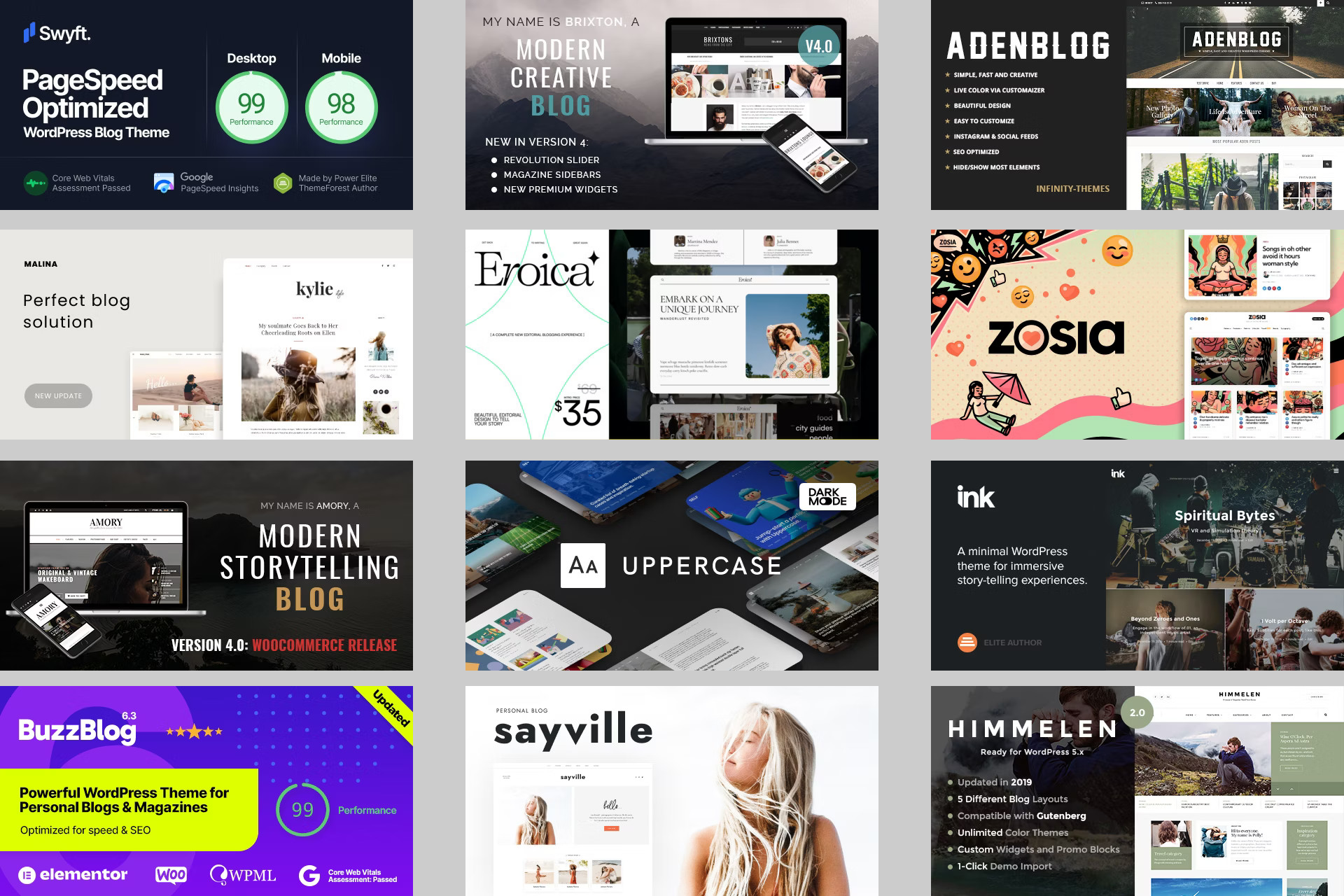In the bustling world of WordPress blogging, selecting the perfect theme for your website is akin to choosing the right palette for an artist's masterpiece. Your theme sets the tone, captures your brand identity, and influences the overall user experience. With an abundance of options available, ranging from minimalist designs to feature-rich templates, finding the best WordPress blog theme can seem like a daunting task. However, fear not! In this guide, we'll explore the steps to help you navigate the vast landscape of best WordPress themes and discover the one that best suits your blogging needs.
1. Define Your Blog's Identity and Objectives
Before embarking on your quest for the perfect theme, take some time to define your blog's identity, niche, and objectives. Consider:
Audience: Who is your target audience, and what are their preferences and expectations?
Content: What type of content will you be publishing? Will you primarily focus on articles, images, videos, or a combination of media?
Branding: What is your brand identity? Consider elements such as colors, typography, and imagery that align with your brand's personality and values.
2. Research and Explore Theme Options
With a clear understanding of your blog's identity, it's time to explore the vast array of WordPress themes available. Here are some avenues for research:
WordPress Theme Directory: Browse the official WordPress Theme Directory, which offers a wide selection of free themes categorized by niche, features, and popularity.
Theme Marketplaces: Explore reputable theme marketplaces such as ThemeForest, Elegant Themes, StudioPress, and Top Site Themes, which offer premium themes with advanced features and customization options.
Demo Sites and Previews: Take advantage of theme demos and previews to visualize how each theme will look and function on your blog. Pay attention to design elements, layout variations, and customization options.
3. Consider Essential Features and Functionality
When evaluating themes, prioritize essential features and functionality that align with your blog's objectives and audience preferences. Key considerations include:
Responsiveness: Ensure the theme is mobile-friendly and adapts seamlessly to various screen sizes and devices.
Customization Options: Look for themes that offer extensive customization options, including color schemes, typography, layout variations, and widgetized areas.
Performance Optimization: Choose a lightweight theme optimized for speed and performance to provide a seamless browsing experience for your visitors.
4. Read Reviews and Seek Recommendations
Before making a final decision, take the time to read user reviews and seek recommendations from fellow bloggers or WordPress experts. Online forums, social media groups, and WordPress communities are valuable resources for gathering insights and recommendations based on real-world experiences.
5. Test and Evaluate
Finally, take your shortlisted themes for a test drive. Install them on a staging site or local development environment to:
Evaluate Performance: Assess the theme's loading speed, responsiveness, and overall performance using tools like Google PageSpeed Insights and GTmetrix.
User Experience Testing: Test the theme's navigation, readability, and usability to ensure a positive user experience for your visitors.
Conclusion
Selecting the best WordPress blog theme is a pivotal step in establishing a captivating online presence and engaging your audience effectively. By defining your blog's identity, researching theme options, considering essential features, reading reviews, and testing themes, you can confidently choose a theme that reflects your brand's personality and enhances the user experience. So, embark on your theme-hunting journey armed with these tips, and watch as your blog blossoms into a visually stunning and engaging online destination for your audience.
For the new year, keep looking for the best WordPress blog themes in 2024. Good luck!

